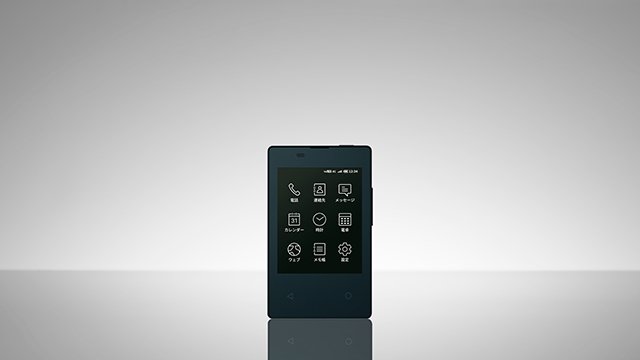As the gaming phone trend emerges, other phone manufacturers and looking to right the wrongs of the last 10 years by creating small phones that professionals from the ’80s and ’90s once longed for. Kyocera, a Japanese company, is dodging the idea of a gaming phone entirely to focus on a device that is little more than just a phone.
The Kyocera KY-O1L, as reported by The Verge, is about as far from a gaming phone as you can possibly get in this day and age. It’s designed to be just two things; small… and a phone.
Featuring a 2.8 inch ePaper display, a miniaturized version of an ebook reader screen is dwarfed by the 6 inch screens flaunted by flagship vendors these days and obviously won’t hold a candle to the vibrant color reproduction smartphones pride themselves on these days as mobile content consumption grows and grows thanks to streaming services like Netflix and Amazon Prime. At a size like that, the popular e-reader display won’t even suffice as an ebook reader at all; but the low power requirements will help the comparably tiny 380mAh battery fuel it’s borderline ancient specs.
So what can the KY-O1L phone do, then? Considering it’s about the size of a credit or business card, this Japanese-made handset isn’t going to be playing Candy Crush in the office or plotting your route to the train station. Instead, expect it to reliably get a call out to AAA if you find yourself stuck in a ditch. Given its specs, there’s reason to believe you could leave this thing in your glove compartment for weeks as an emergency fallback.
It doesn’t run Android, iOS, or any other notable operating system you’re likely to have come across before. Instead, you have a simple black/white dashboard with Call, SMS, and timekeeping applets, and a settings screen. With the 4G icon showing up in the top right and a globe icon right of the product image, it’s safe to say you’ll at least be able to look up an emergency contact number in a pinch.
Despite all that, the KY-O1L will still retail for close to $285. Sounds like Kyocera looks to recoup the R&D costs of creating what it claims is the “world’s thinnest smartphone”.







